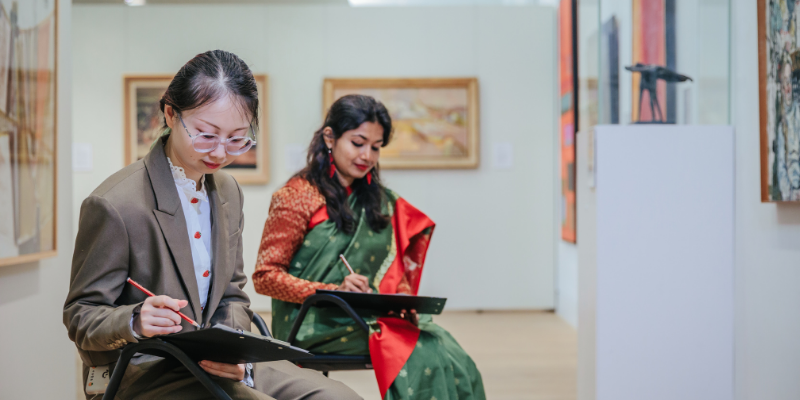Mohammad Barrangi: One Night, One Dream, Life in the Lighthouse

- <b>Until:</b> Saturday 20 July 2024
- Location: The Stanley & Audrey Burton Gallery
- Cost: Free
A major new commission by Leeds-based artist Mohammad Barrangi (b. 1988, Iran) explores notions of home, childhood and migration as part of the Smeaton300 programme.
‘One Night, One Dream, Life in the Lighthouse’ brings Barrangi’s unique and inventive printmaking process together with sculpture, installation and sound. The artist weaves a dreamlike universe from childhood memories and Persian mythology, revolving around the story of a young Iranian girl’s arrival on the English coast, and contemplating his personal experiences of migration and disability.
His latest body of work incorporates themes and motifs discovered during his recent residency in the University’s Special Collections, with sources ranging from Persian calligraphy and Middle Eastern textiles and manuscripts to early European scientific illustrations. Through a wealth of symbols and narratives, Barrangi’s work suggests notions of freedom, memory, community and identity, calling for greater worldwide, cross-cultural understanding.
<iframe width="560" height="315" src="https://www.youtube.com/embed/yNMfZWXAm3o?si=b7I2dSGtrp83C4gV" title="YouTube video player" frameborder="0" allow="accelerometer; autoplay; clipboard-write; encrypted-media; gyroscope; picture-in-picture; web-share" referrerpolicy="strict-origin-when-cross-origin" allowfullscreen></iframe>
A song from the north of Iran ushers the visitor into an all-enveloping world of the imagination. The girl’s ‘talismanic dress’ is the subject of an extraordinary series of prints, and a large structure based on a minbar, a pulpit for delivering sermons in mosques, is completely adorned with Barrangi’s designs. A door at its entrance “seems to lead to another world”. Its dome resembles a lighthouse, reflecting the work of John Smeaton, the UK’s first civil engineer, who was born and died in Leeds, and whose tricentenary is marked across the city this year with a programme of events by Foxglove.
In collaboration with The Highrise Project, and as part of the Galleries’ ‘Welcoming Migrants’ initiative, the exhibition features a collective digital artwork made by a group of refugees, asylum seekers and migrants living in Leeds which responds to Barrangi’s artwork.
A group of student volunteers have also produced an online audio project that records personal experiences of migration alongside poetry selected from Special Collections.
Please see our Events page for further details of the full supporting programme.
Smeaton300
The University of Leeds begins its official partnership with Smeaton300 to commemorate the 300th anniversary of the birth of ‘father of civil engineering’ John Smeaton.
Born in Leeds in 1724, Smeaton dedicated his life to developing tools and innovations for the betterment of society, leaving behind a legacy in the field of infrastructure design. His achievements include bridges, canals, harbours, and lighthouses, most famously the revolutionary Eddystone Lighthouse. Inspired by the shape of an oak tree, its broad base and tapering tower enabled it to withstand the fearsome power of the waves off the coast of Plymouth.
Smeaton300, a creative events programme by Foxglove, takes inspiration from the groundbreaking work of the UK's first civil engineer to curate a series of engaging events for the public.
This year, The University of Leeds' Cultural Institute and School of Civil Engineering partners with Foxglove to commemorate the 300th anniversary of John Smeaton’s birth, through a range of research inspired cultural activity on campus and beyond.





